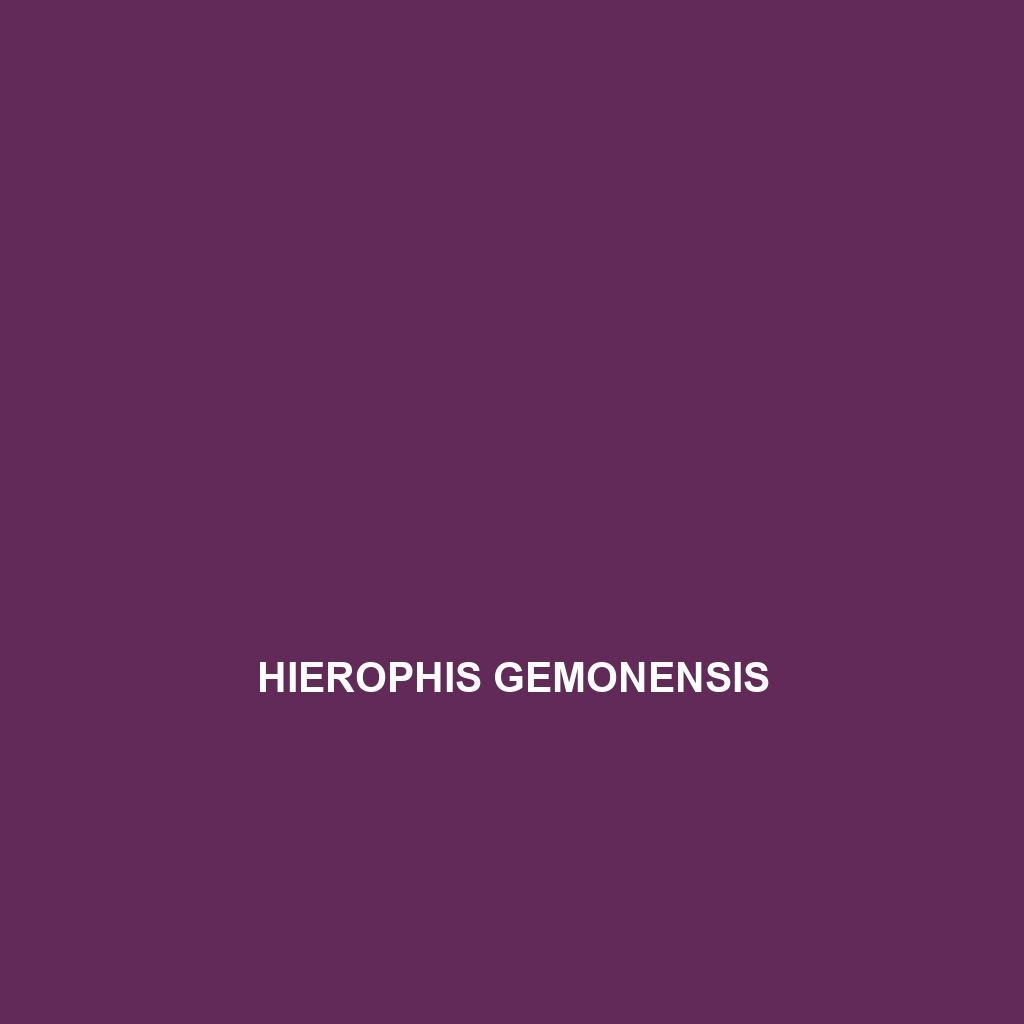Common Name
Hierophis gemonensis
Scientific Name
Hierophis gemonensis
Habitat
The Hierophis gemonensis, commonly known as the Italian Whip Snake, is primarily found in the Mediterranean region, particularly within the countries of Italy, Slovenia, and Croatia. This species thrives in various habitats, including temperate forests, scrublands, and grasslands. It exhibits a preference for areas with abundant underbrush and sunlit patches, which provide both cover and basking opportunities. The mild Mediterranean climate, characterized by hot summers and mild winters, contributes significantly to its distribution. Furthermore, this species is often spotted near agricultural fields, demonstrating an adaptable nature towards human-altered environments.
Physical Characteristics
The Hierophis gemonensis generally reaches an average length of 80 to 120 cm, although some specimens can grow up to 150 cm. The snake features a slender body with a distinct head that is slightly wider than the neck. Its coloration is remarkably variable; it often showcases a background of greenish to grayish hues, with prominent darker streaks along the body. One of its unique features is the strikingly patterned belly, usually adorned with bold, alternating black and yellow or white squares. These physical characteristics play a crucial role in its camouflage among foliage and grass, aiding in both predator avoidance and hunting strategies.
Behavior
The behavior of Hierophis gemonensis is largely diurnal, meaning it is most active during daylight hours. This snake exhibits a preference for basking in the sun, which is essential for thermoregulation. In terms of social interactions, these snakes are generally solitary except during the breeding season. Interestingly, they are known for their agile movements and quick reflexes, making them adept at escaping potential threats. The mating rituals involve elaborate displays where males will engage in head-bobbing and body undulating to attract females, particularly during the spring when the breeding season commences.
Diet
As a carnivore, the diet of Hierophis gemonensis primarily consists of lizards, small mammals, and bird eggs. This species is an effective predator, relying on its speed and stealth to ambush prey. It employs a strategy of patiently waiting until the right moment to strike, using its keen eyesight to detect movements. Occasionally, it may also consume smaller snakes, demonstrating a degree of opportunism in its feeding habits. This diverse diet allows it to thrive in various landscapes where potential prey are abundant.
Reproduction
The reproductive cycle of Hierophis gemonensis typically begins in April and can last until early summer. Males engage in combat with one another to win the favor of females during the mating season. After successful mating, females lay clutches of 5 to 15 eggs, usually in secluded, moist areas conducive to incubation. The gestation period extends around 8 weeks, with hatchlings emerging in late summer or early autumn. In terms of parental behavior, there is little to no parental care post-oviposition, as the young are independent from birth and must fend for themselves in their environment.
Conservation Status
The conservation status of Hierophis gemonensis is classified as Least Concern by the International Union for Conservation of Nature (IUCN). However, like many species, it faces threats primarily from habitat loss due to urbanization and agriculture. Conservation efforts are focused on habitat preservation and the establishment of protected areas to ensure the survival of this snake in its native regions. Local initiatives aim to educate communities about the importance of snakes in the ecosystem, combating any negative perceptions that may exist.
Interesting Facts
One of the most intriguing facts about Hierophis gemonensis is its exceptional agility and speed, enabling it to travel up to 2-3 meters per second. This swift movement makes it one of the fastest snakes in its region. Additionally, its ability to change colors slightly, depending on environmental conditions, contributes to its effective camouflage. Another noteworthy aspect is the snake’s method of defense; when threatened, it may inflate its body and hiss loudly, attempting to deter predators without resorting to venomous bites.
Role in Ecosystem
The Hierophis gemonensis plays a vital role in its ecosystem as both a predator and prey species. As a predator, it helps control the populations of lizards and small mammals, maintaining a balanced ecosystem. Furthermore, it serves as a food source for larger predators, including birds of prey and larger snakes, thereby contributing to the food web. This species is also a significant indicator of environmental health, as its presence often signifies a diverse and functioning habitat. Protecting Hierophis gemonensis can thus have broader implications for conserving biodiversity in its native regions.
